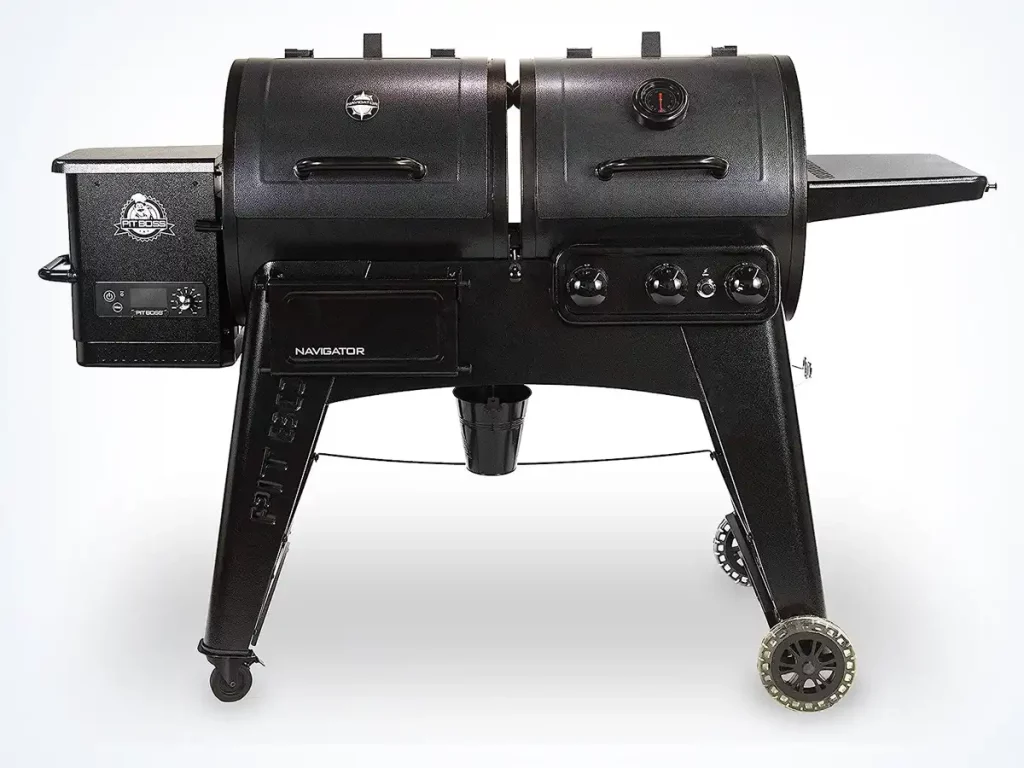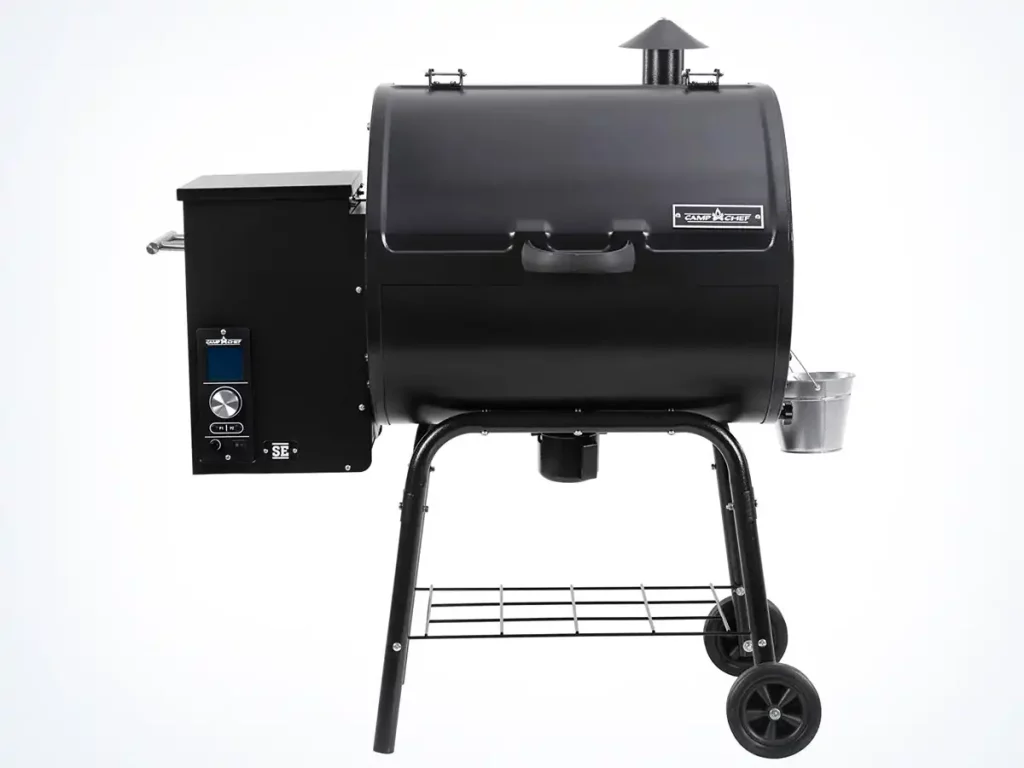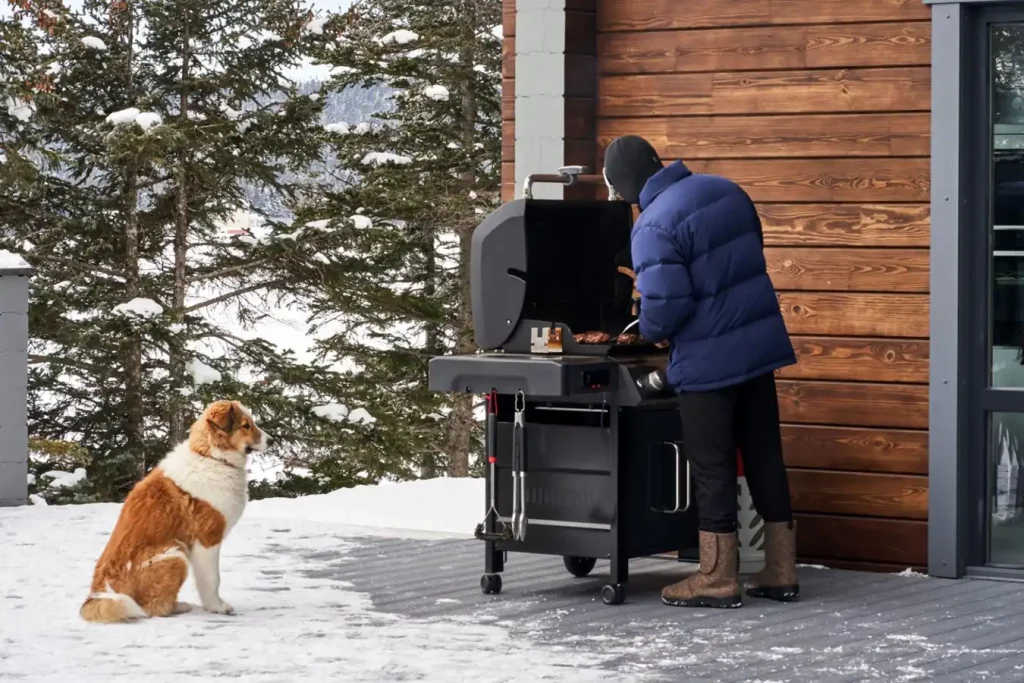Ever wondered how to grill without charcoal or wood?
Hi, I’m Ovi Tanchangya, your friendly guide to exploring new grilling frontiers.
In this article, I aim to share my love for outdoor cooking with all of you, offering a unique twist on traditional grilling methods.
We’ll dive deep into alternatives that will still get you that smoky flavor without using charcoal or wood.
Expect to be pleasantly surprised, and by the end of this, I bet you’ll be itching to try these techniques out for yourselves.
Are you ready to challenge the old ways and elevate your grilling game? Dive in, and let’s get started!
Understanding Different Types of Grills
Before we delve into the alternatives, let’s start by understanding a bit about grilling. Grilling is an art, a science, and a passion all rolled into one. It’s about more than just the food; it’s about the experience and the joy it brings. However, the type of grill you use can significantly affect your grilling journey.
Traditional Grilling Methods: Charcoal and Wood
Charcoal and wood grills have long been the staple of this cherished cooking method. There’s something enchanting about the smoky aroma of charred wood that imbues an authentic, rustic flavor into the food. Charcoal and wood grills are classic and have been used since time immemorial. They are appreciated by traditionalists for the unique smoky flavor they impart to the food.
But, as is often the case, these traditional methods come with their own set of challenges. They require a lot of preparation, are relatively slow to heat up, and controlling the temperature can be a tricky affair. Plus, you need to have a constant supply of wood or charcoal, which isn’t always convenient or practical.
Alternative Grilling Methods
That’s where our alternative grilling methods come in. With advancements in technology, there are now grills that don’t require wood or charcoal to cook up a feast. Gas grills, electric grills, and pellet grills have made grilling simpler, quicker, and more accessible to everyone. Let’s explore these options.
Gas Grills: Gas grills, powered by propane or natural gas, are a fantastic alternative to charcoal and wood grills. They heat up quickly, are easy to clean, and offer precise temperature control. The only thing you may miss is the smoky flavor of charcoal grills, but for the convenience and speed they offer, it’s a small compromise for many.

Electric Grills: Perfect for those who live in apartments or have limited outdoor space. Electric grills only require a power outlet to work. While they may not give you the full outdoor grilling experience, they allow you to grill your favorite food in the comfort of your kitchen.
Pellet Grills: A newer kid on the block, pellet grills, use small wood pellets for fuel. They are electrically powered to regulate the flow of pellets, offering a unique mix of convenience and the much-loved smoky flavor. Pellet grills allow for a lot of flexibility – you can grill, smoke, and even bake on them.

Remember, the best grill is the one that fits your needs and lifestyle. Whether it’s the convenience of a gas grill, the compact design of an electric grill, or the versatility of a pellet grill, grilling without charcoal or wood has never been easier.
In short, you can grill without charcoal or wood by using a gas or electric grill, which allow for consistent, controllable heat and often have adjustable settings for different types of cooking.
Preparing to Grill without Charcoal or Wood
Now that we’ve explored the alternative grilling methods, let’s get into the nitty-gritty of preparing to grill without the traditional charcoal or wood. Preparation is key when it comes to grilling. From selecting the right grill, understanding its settings, to taking necessary safety precautions, each step is crucial to ensure an enjoyable and safe grilling experience.
Choosing the Right Grill
When deciding on the type of grill to use, consider your needs, circumstances, and personal preferences.
Gas Grills: These are a popular choice for their convenience and speed. They’re excellent for those who grill regularly and value precise temperature control. However, they’re typically more expensive than other grills and lack the classic smoky flavor that charcoal or wood grills provide.
Electric Grills: These are compact, easy to use, and perfect for those with limited space or live in apartments where other grills might not be allowed. However, they require a power source, so they may not be ideal for all outdoor settings.
Pellet Grills: Pellet grills combine the flavor of wood grills with the convenience of electric grills. They offer excellent temperature control and versatility, allowing for smoking and baking in addition to grilling. On the downside, they require electricity and may be pricier than other options.
Understanding Grill Settings
Each type of grill comes with its own set of settings and controls.
Gas Grills: Gas grills often feature knobs to control the gas flow, affecting the heat intensity. You’ll typically find settings for low, medium, and high heat.
Electric Grills: Electric grills usually have a simple dial or digital controls for temperature regulation, similar to your kitchen oven. It’s often as simple as setting your desired temperature and letting the grill do its job.
Pellet Grills: These grills offer advanced controls, allowing for a precise set temperature. They automatically feed the pellets to maintain the chosen temperature.
It’s crucial to understand these settings to effectively control your cooking process.
Safety Precautions
Finally, regardless of the type of grill you use, safety should always be a priority.
Ventilation: All grills, especially gas and pellet grills, should be used in a well-ventilated area to ensure proper combustion and prevent harmful fumes.
Regular Inspection and Cleaning: Regularly inspect your grill for any leaks or damages, especially for gas grills. Regular cleaning will also prevent fat build-up, which can cause fires.
Fire Safety: Always have a fire extinguisher or other fire safety equipment nearby when grilling. Never leave your grill unattended while it’s on.
By understanding these preparations and precautions, grilling without charcoal or wood can be as enjoyable and flavorful as the traditional method, if not more. Let’s get grilling!
How to Grill with a Gas Grill
One of the most popular alternatives to charcoal or wood grilling is the trusty gas grill. If convenience, speed, and precise temperature control are your jam, then this is your tool. Let’s dive into the specifics of how to make the most out of your gas grilling experience.
Setup and Preheating
First things first, setting up your gas grill properly is crucial to your grilling success. Here’s a step-by-step guide:
- Ensure your gas tank is safely connected and that all connections are secure.
- Open the lid of your grill. This is an essential safety step, as it prevents the buildup of gas inside the grill which could cause a flare-up when ignited.
- Turn on the gas at the tank and then ignite the burners according to your grill’s specific instructions.
- Close the lid and let the grill preheat. Most gas grills take about 10-15 minutes to reach the right temperature. You’re looking for a temp around 450-500°F (232-260°C) for high, 350-400°F (177-204°C) for medium, and about 250-300°F (121-149°C) for low heat.
Cooking Techniques
Gas grills are versatile, making them perfect for grilling a variety of foods.
For meats: Start with a high heat to sear the outside and lock in juices, then move to a cooler part of the grill to let it cook through to your desired doneness.
For vegetables: Most veggies do well on medium heat. Toss them in a bit of oil before placing them on the grill to prevent sticking and to help them cook evenly.
For fish: Fish can be delicate, so a lower heat setting and a well-oiled grill or even a piece of aluminum foil can prevent sticking and overcooking.
Tips for Achieving Smoky Flavor
While gas grills might not naturally impart the same smoky flavor as charcoal or wood, there are a few tricks you can use to mimic it:
Use Smoker Boxes or Smoke Tubes: These are containers where you can put wood chips that will slowly smolder and produce smoke, infusing your food with a smoky flavor. They can be placed directly on the heat source.
Choose Smoky Spices and Marinades: Spices like smoked paprika, chipotle, or liquid smoke can lend a smoky note to your food. Similarly, marinades with ingredients like Worcestershire sauce or soy sauce can add depth and smoky undertones to your grilling.
Learn more: How to Set Temp on Camp Chef Pellet Grill
How to Grill with an Electric Grill
Electric grills are another convenient option, especially for those who may not have access to outdoor space or are under restrictions for using open flames. Plus, they’re incredibly easy to use and maintain. Let’s explore how to optimize your electric grilling experience.
Setup and Preheating
Setting up an electric grill is straightforward, making it a favorite among grilling novices. Here’s how to do it:
- Place your grill on a stable, flat surface. Remember, safety first!
- Plug the grill into an electrical outlet. If you’re using an outdoor electric grill, ensure the outlet is safe for outdoor use.
- Turn on the grill and set your desired temperature. Most electric grills heat up quickly, but give it around 10 minutes to reach a stable temperature.
- Once preheated, if your model has a lid, open it up, and you’re ready to start grilling.
Cooking Techniques
Just like with gas grills, electric grills are quite versatile.
For meats: Searing is still the way to go. Many electric grills come with adjustable temperatures, so start on high to sear, then lower the temperature to finish cooking.
For vegetables: Medium heat works well. Just as before, toss your vegetables in some oil before grilling to prevent sticking and to ensure they cook evenly.
For fish: Keep the heat on the lower side to prevent the fish from drying out or falling apart. A piece of foil or a grill mat can be a helpful tool here.
Tips for Achieving Smoky Flavor
Achieving that smoky flavor on an electric grill can be a bit tricky, but there are still ways to mimic it:
Use Smoky Spices and Marinades: Just as with gas grilling, using spices like smoked paprika or marinades with a smoky profile can bring that traditional grilling flavor to your dishes.
Grill Smoky Ingredients: Consider grilling foods that already have a smoky flavor profile, like chipotle peppers or certain types of cheese (like smoked gouda). This can give an overall smoky flavor to your dish.
Grilling with an electric grill is a breeze. It’s about understanding the unique characteristics of this grilling method and adapting your techniques to get the best results.
Maintaining Your Grill
Once you’ve mastered the art of grilling without charcoal or wood, you’ll want to ensure your grill stays in prime condition for many more feasts to come. Maintenance is key for longevity and performance. It’s not only about cleaning after each use, but also proper storage and occasional check-ups. Let’s delve into that.
Cleaning Techniques
Cleaning your grill regularly is vital for maintaining its performance and ensuring your food tastes as good as it should. Here are some guidelines for cleaning and maintaining your grill:
Gas grills: Turn on the grill at high heat for about 15 minutes after every use. This will burn off any food residue. Once it cools down, use a grill brush to clean off any leftover bits. Don’t forget to regularly check and clean the drip tray.
Electric grills: Once you finish cooking and the grill cools down, you can typically remove the plates and wash them in warm, soapy water. Use a non-abrasive scrubber to remove stubborn residue. Always consult your manual for specific cleaning instructions, as not all models are alike.
Storing Your Grill
Proper storage is just as important as regular cleaning.
Gas grills: After ensuring your grill is clean, disconnect the propane tank. If you have a grill cover, use it! It helps protect against weather and pests. Store it in a cool, dry place.
Electric grills: Once clean and dry, store your electric grill indoors. The cords and electrical components are sensitive to moisture and harsh weather conditions.
FAQs about Grill Without Charcoal or Wood
What can I use instead of charcoal for grilling?
What is the best way to grill without a BBQ?
Can you grill with regular firewood?
Is it healthier to grill with wood or charcoal?
Conclusion
Who said you need charcoal or wood to enjoy a great grilling experience? As we’ve explored, gas and electric grills offer fantastic alternatives, each with their unique benefits and features. Whether you’re confined indoors, want to avoid the smoke and hassle of traditional grilling, or just prefer the convenience of these methods, there’s no reason why your barbeque can’t be just as enjoyable.
So, what’s next? It’s time to embrace these alternative grilling methods. Choose the grill that suits your needs and circumstances best, and let’s get grilling! Remember, maintenance is the secret to prolonging the life of your grill.
Now, armed with these insights, you are prepared to embark on your smokeless grilling journey. So, go forth, and may your grilling adventures be filled with mouthwatering delights. Happy grilling!
Read more: How Long to Cook Turkey Burgers on George Foreman Grill


